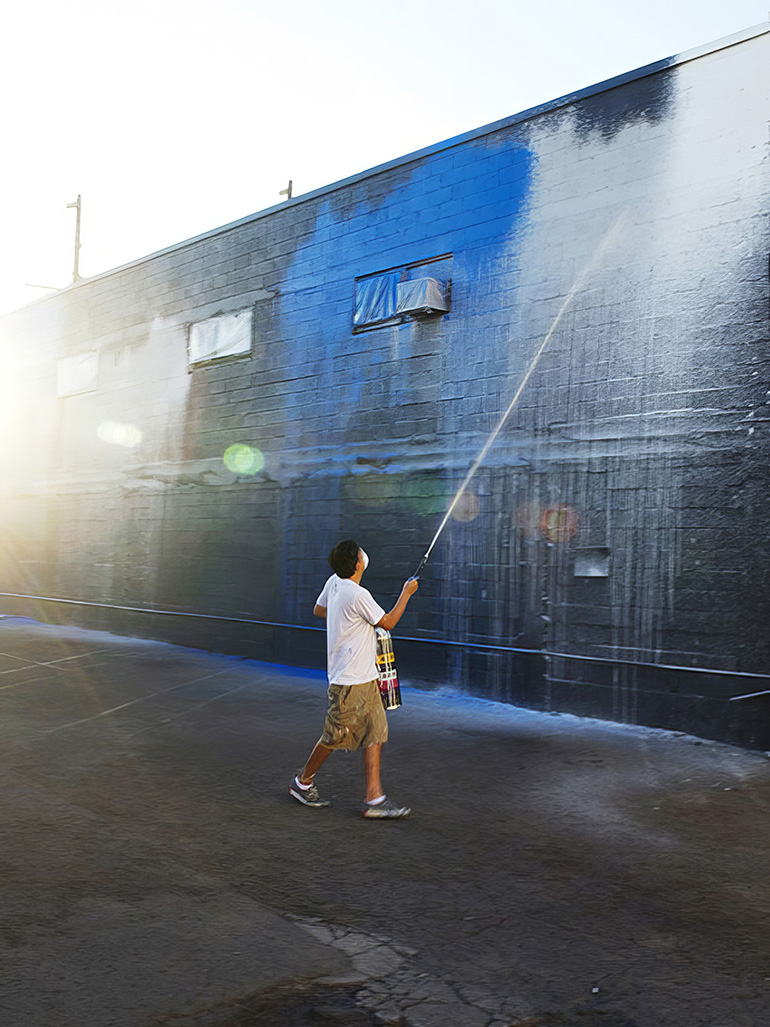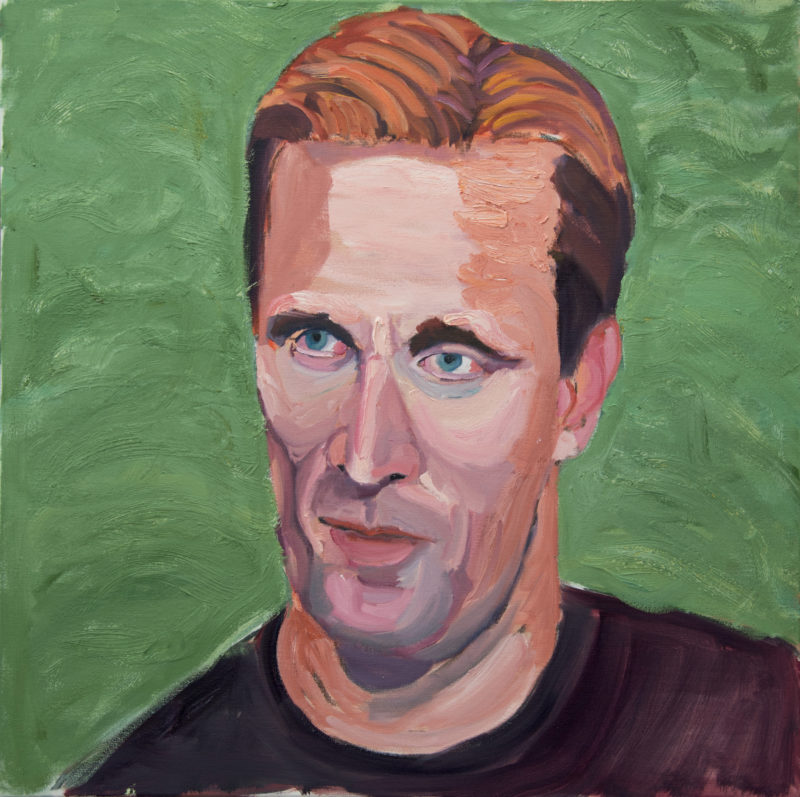
Introduction
One of the most central components of contemporary art is its relation to politics – from the government structures as subject matter and current global events to questions of how aesthetic representation can remedy or simulate gaps in political representation to the manner in which identity is being politicized.
Mostly, it is usually someone from the outside creating artwork that reflects political events. However, in the case of Portraits of Courage: A Commander in Chief’s Tribute to America’ Warriors series, it is someone from inside the political world portraying political and social events, some of which shook the world the soul.
Consisting of 98 paintings, the series honors post-9/11 U.S. veterans and is housed at the new art space at the Kennedy Center.
The journey to view these paintings is paved in tributes to nationalism. It is jarring, having to pass by the Capitol and the White House, the National Mall and its series of monuments and museums, embassies, and numerous government agencies, all combine to condition you to experience Official American Art. After all, the Kennedy Center is the de facto U.S. National Cultural Center.
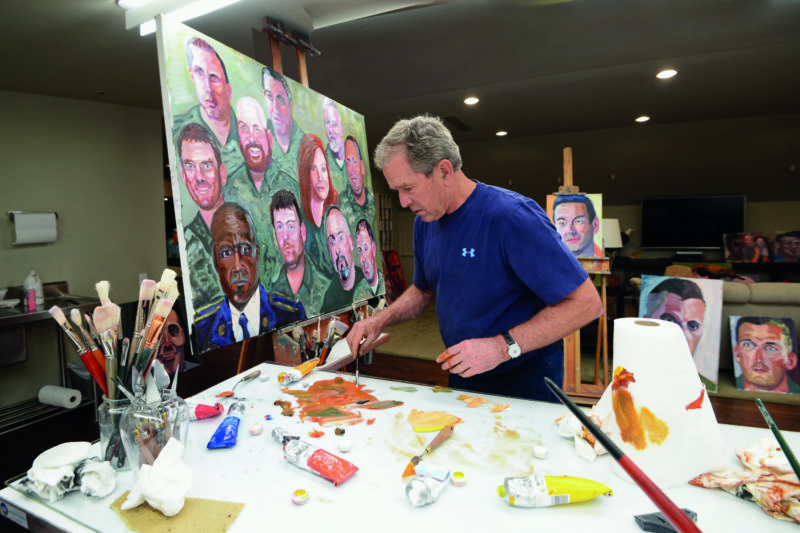
George W. Bush painting the images of servicemen and women
The former president of the United States, George W. Bush 1 is on a new mission – to paint the images of heroic servicemen and women that served during his tenure at the White House 2. Since leaving the office, George W. Bush has also written a memoir of his time as president and a book dedicated to his father.
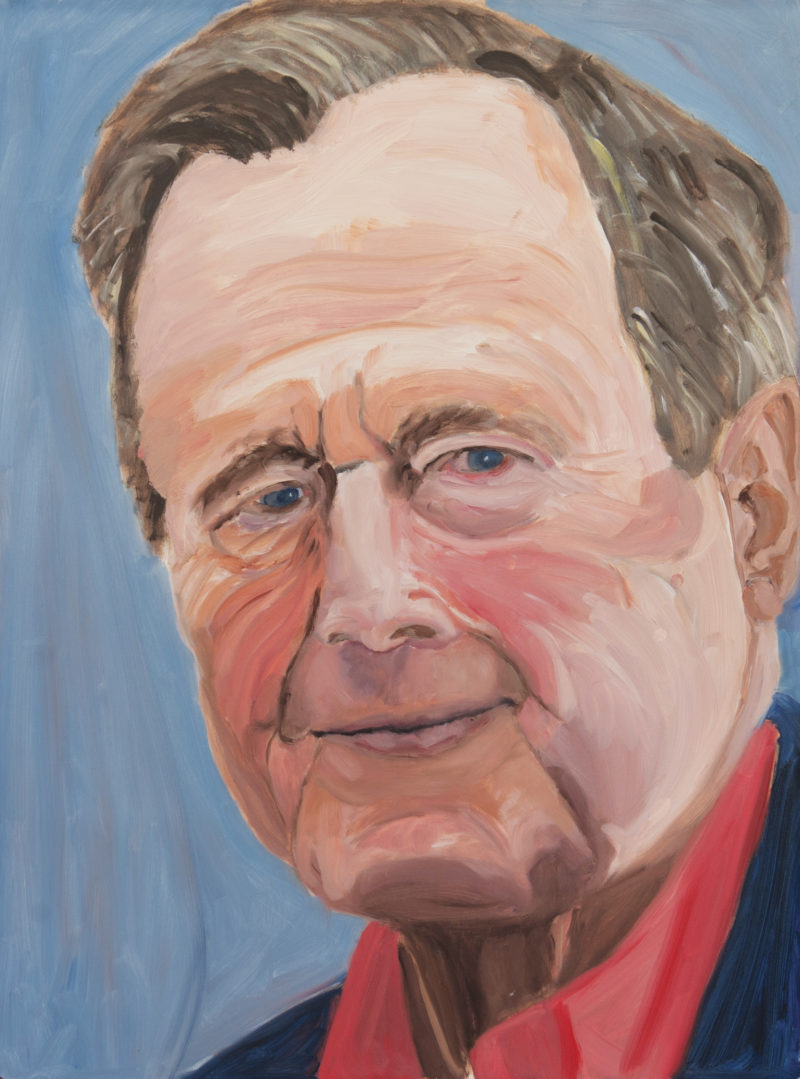
President of the United States 1989-1993.
“I was a big believer then, and still am, that personal diplomacy can be very useful and productive.” – President George H.W. Bush
His Book: Portraits of Courage: A Commander In Chief’s Tribute to America’s warriors
The new book is a significant departure from what people know Bush for. It is a book that contains 192 pages of oil paintings of some sailors, marines, soldiers and airmen of people who got wounded during the wars that he led the USA to fight.
In addition to the paintings, he wrote stories of how each of the subjects dealt with setbacks that met him or her on the battlefield and how each mounted a recovery.
The book is titled: Portraits of Courage: A Commander In Chief’s Tribute to America’s warriors. The former president gets straightforward on strategies and ways to face challenges.
His book, which was released at the end of February 2017, is one of the leading books in the non-fictional list of bestsellers. The Publishers Weekly placed it just behind ‘Dr. Seuss – Classic Green Eggs and Ham’. The book follows the same structure as President F. Kennedy’s 1955 book titled ‘Profiles of Courage.’
His book featured short biographies of leading senators in his tenure. Along with the book, Bush will be exhibiting the original works that he painted at George W. Bush Presidential Center, which is located in Dallas.
George W. Bush knows everyone whose image he painted
In his interview with NBC, the former president said that he knows everyone whose image he painted. He said that he was thinking of their backgrounds, injuries, service, and recovery. This seems to be a bold statement given the amount of criticism he has received to lead the country to two costly wars during his tenure.
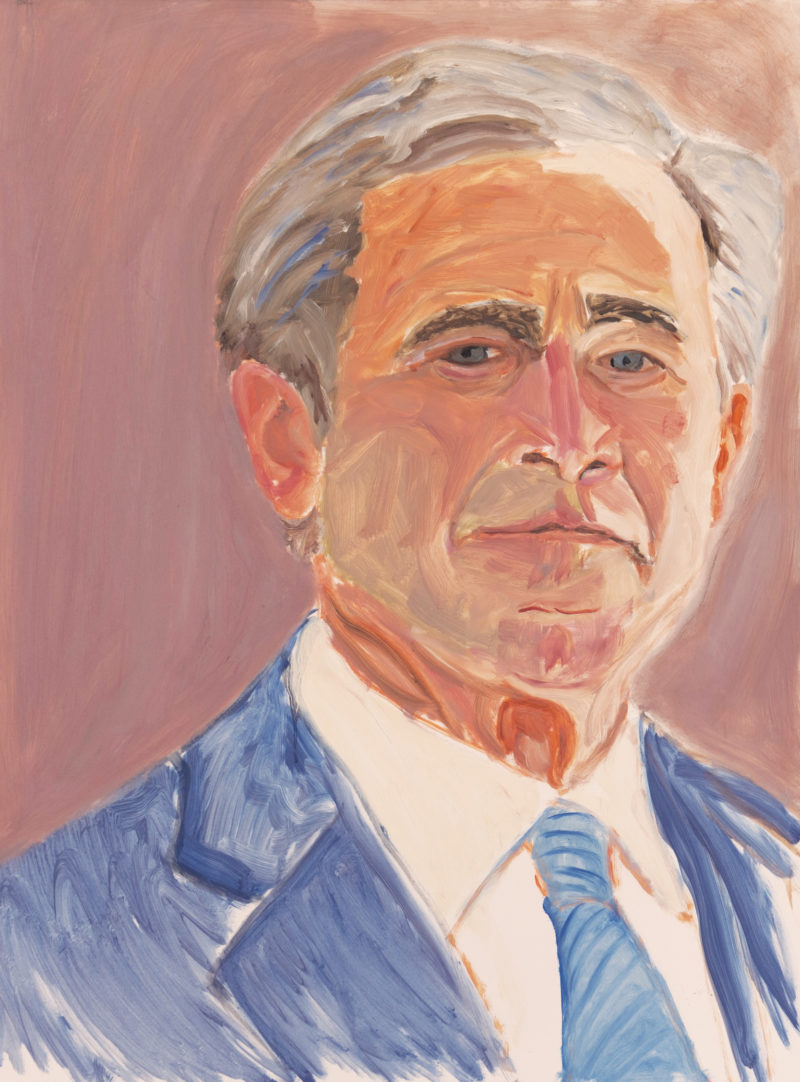
President of the United States 2001-2009.
“I placed a high priority on personal diplomacy. Getting to know a fellow world leader’s personality, character, and concerns made it easier to find common ground and deal with contentious issues. That was a lesson I had picked up from Dad, who was one of the great practitioners of personal diplomacy.”
Veterans (Portraits of Courage)
The world was first introduced to former President George Bush paintings by a hacker who published the images online in 2013. The reaction was expected. I mean, Bush can paint?
The images drew instant attention in the mainstream media and online and after the dust had settled, culture writers, art critics, and the public embarked on the journey of analyzing the subject matter of the portraits, evaluating their composition and quality.
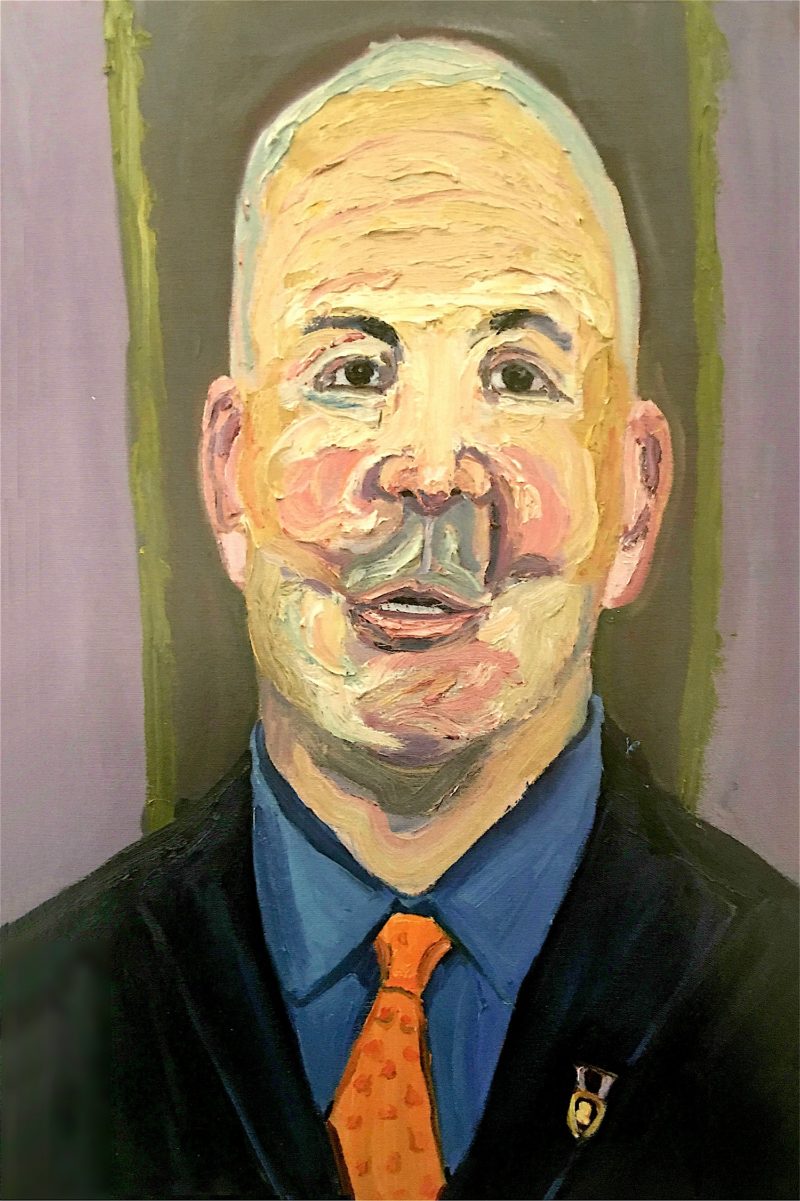
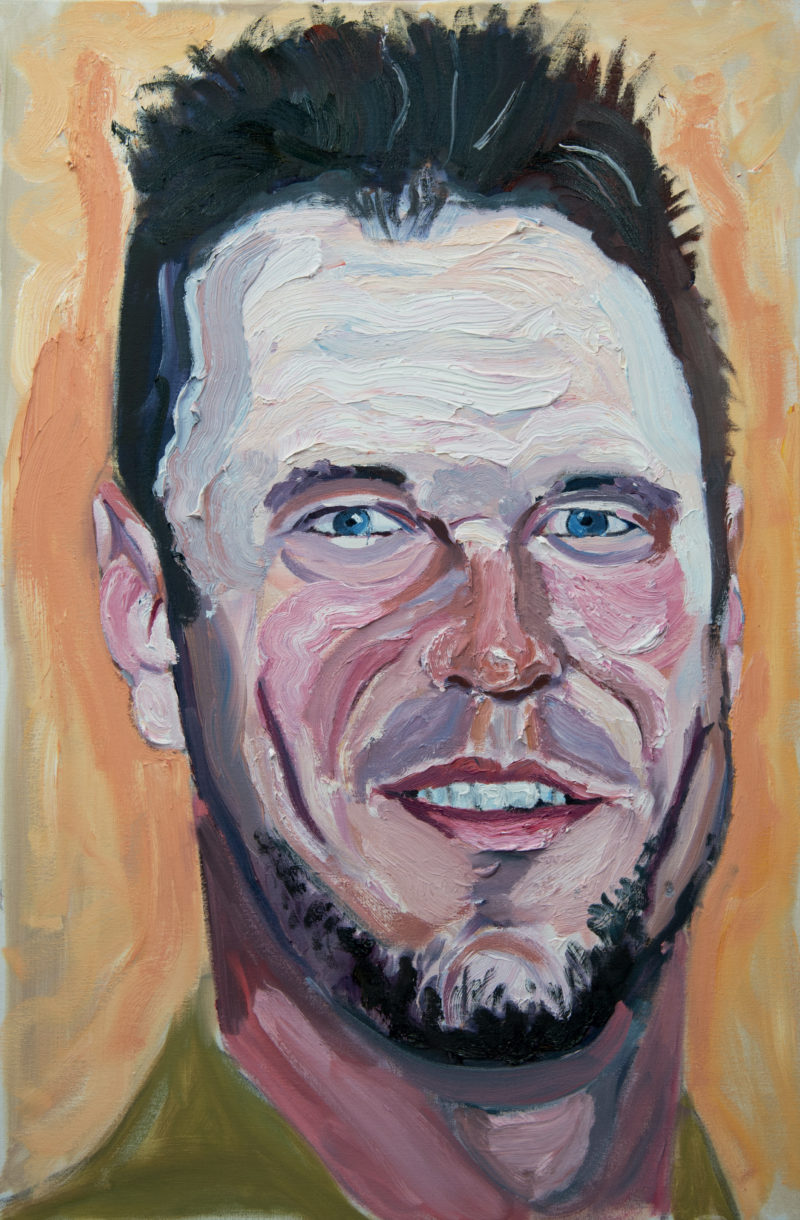
Bush’s nascent career in painting provoked such a level of public interest that even the best contemporary artists never managed to achieve.
The shrewd instrumentalization of his painting caught everyone by surprise and raised an important challenge to traditional assumptions about the purpose and nature of amateur art creation.
It also raises significant questions relating to the relationship of amateur art to the conceptual practices and concerns that have been part and parcel of modern art, especially since the recent shift to socially engaged art practices.
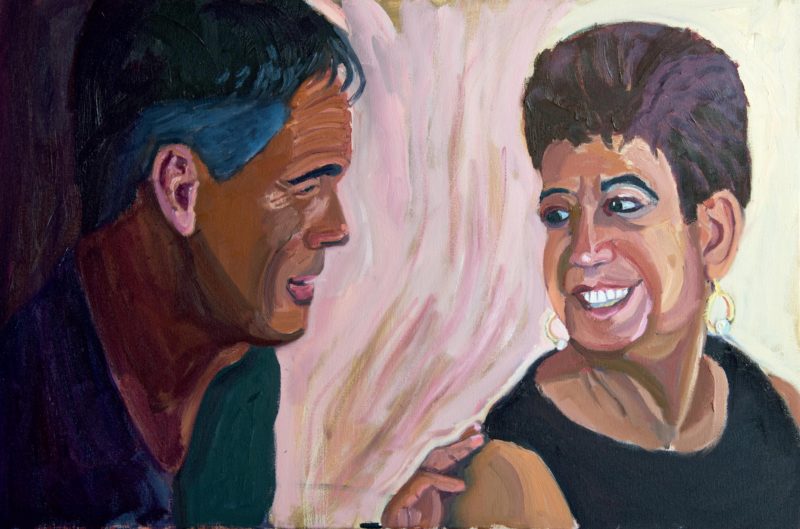
Master Sergeant Roque Urena served in the U.S. Air Force from 1983 to 2008, treating more than 3,500 injuries as a shift leader in the emergency room during his 2004 deployment in Iraq. Here, he’s shown with his wife, Marlene.
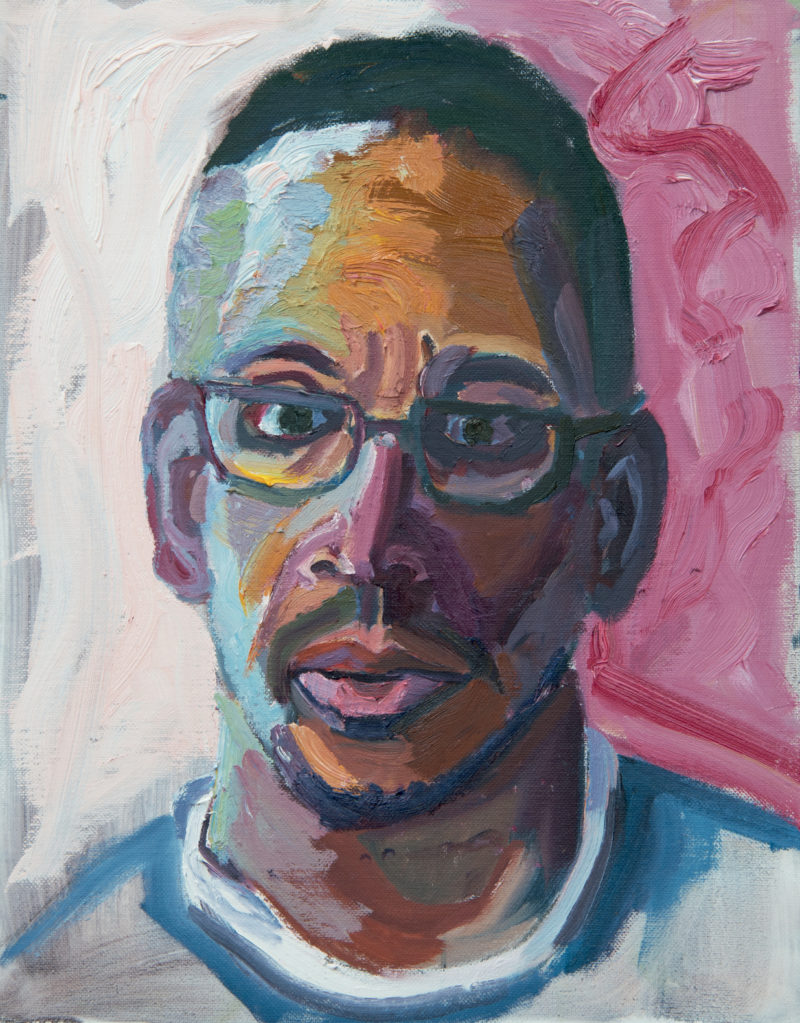
The 98 portraits were made into a book with the same title, and it documents challenges that veterans face when they return home. It also highlights ways in which members of society can stand by them as they navigate these challenges.
Bush started this venture as a post-presidency pastime, creating portraits in the evening to honor some of the veterans he encountered during his time in the office between 2001 and 2009, and thus they constitute his first art book.
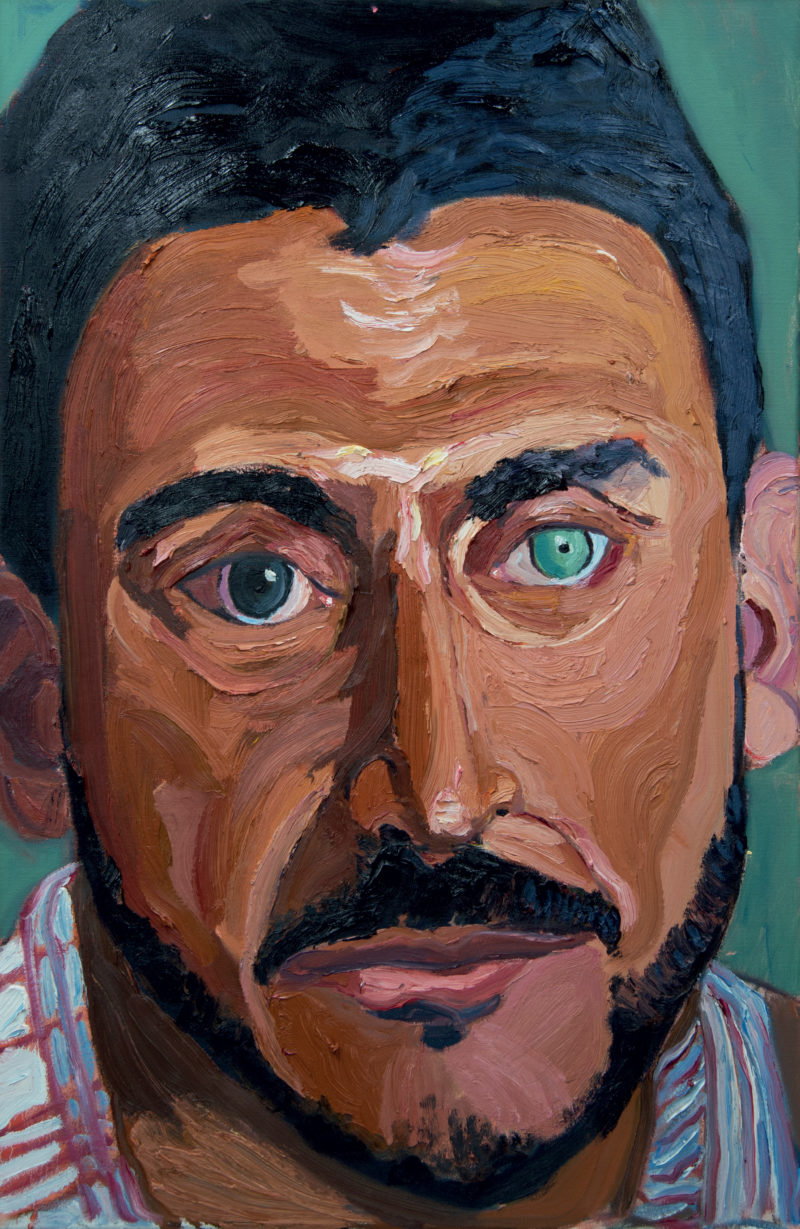
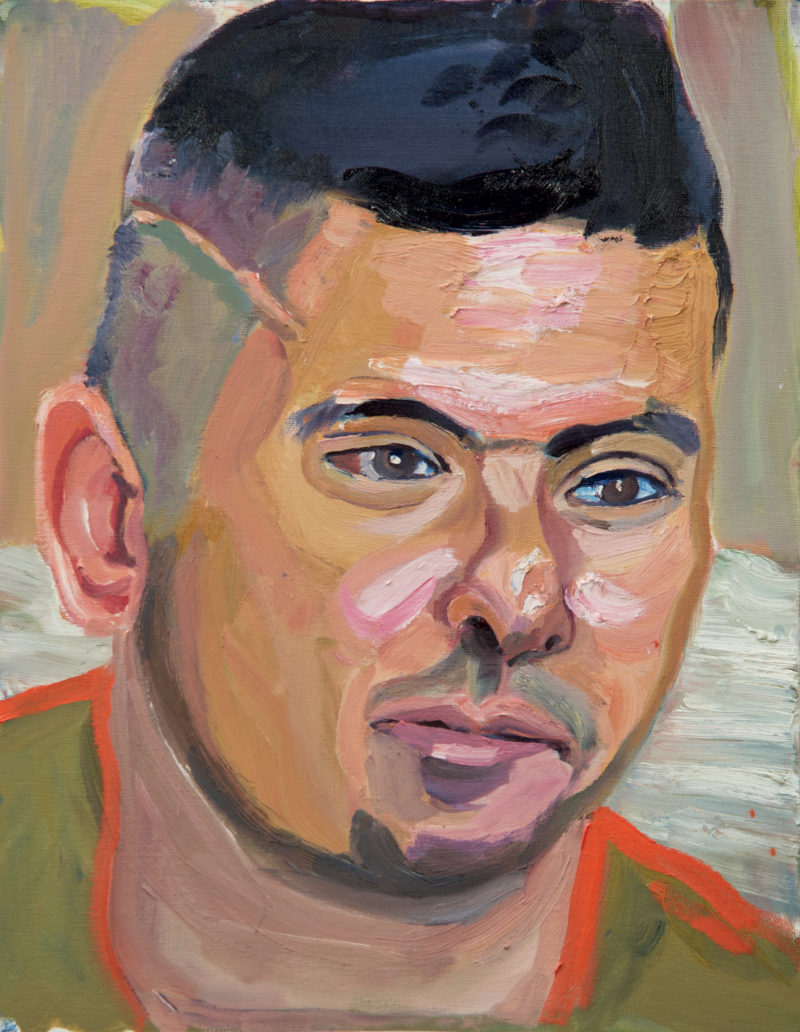
The prelude was penned by General Peter Pace and former First Lady Laura Bush. The book features sixty-six full-color images and a four-panel painting based on pictures of the 98 physically and/or mentally wounded U.S. veterans (Navy, Marine Corps, Army, and Air Force) of Iraq and Afghanistan wars as painted by the president.
The president wrote the descriptive text that accompanies each portrait. The proceeds from the sale of the artworks were donated to the George W. Bush Presidential Center.
Today, the book is available in hardcover as well as in a limited edition signed by the president.
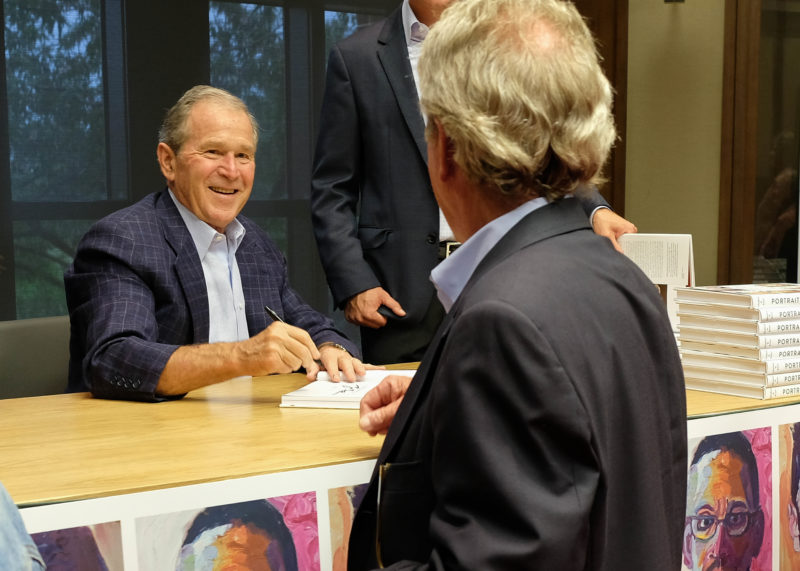

Sergeant Leslie Zimmerman, a medic, joined the U.S. Army at age 18 and served from 2001 to 2004, with a deployment to Iraq in support of Operation Iraqi Freedom.
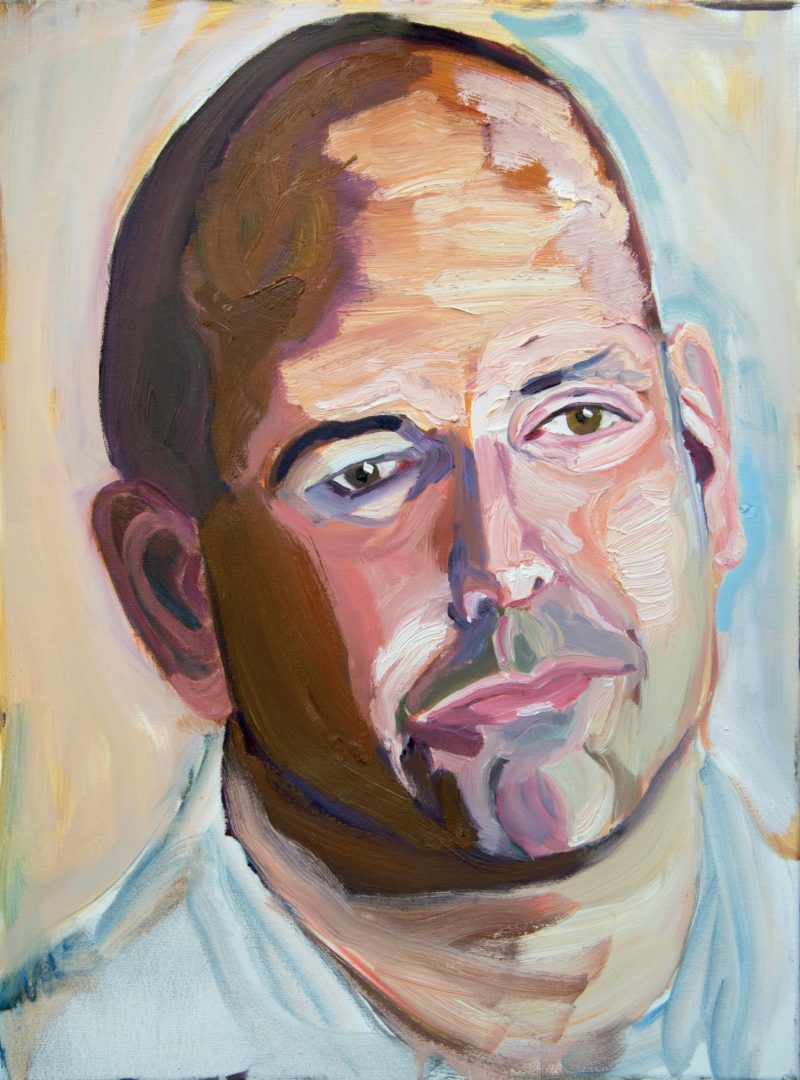
Sergeant Michael Politowicz serves in the U.S. Marine Corps today, just as his grandfather did during World War II. Politowicz became a Marine in 2010, after 10 years of training to qualify, and chose to return to active duty instead of medically retiring after he was wounded by an IED in Afghanistan.
Video: George W. Bush & Veteran Richard Casper On Finding Healing In Art
26 min 17 sec
The reaction of critics
The reaction of critics
Critics are surprised by the relatively good quality of the Bush paintings where the people he talks about have their faces clearly defined. Moreover, there is a feeling of warmth and innocence from the images. Bush says that this is a great way to honor the servicemen for their ultimate sacrifice in serving their country. The booklets the world know what they went through and inspires others in problems.
Bush cat paintings
In addition to dogs and portraits, the former president also painted felines. The first portrait of a black and white cat was leaked online by a hacker (the same hacker that leaked the president’s other portraits) named Guccifer.
The leaked image shows a tuxedo cat resting atop a shelf and looking contemplative. The hacker revealed three cats painted by W.
Besides Guccifer the Hacker, a neighbor of the former president’s daughter managed to snap a photo of her bedroom in Manhattan 3, showing a cat painting supposedly made by her father for Valentine’s Day.
The painting depicts Barbara’s cat named Eleanor; according to her daughter 45:
He’s an excellent artist.
Old dog learns new tricks
Despite his seemingly proficient artistic skill and the success of his artworks, President Bush is still considered an amateur artist because of his primary public image as a politician and American president.
After creating the Portraits of Courage or before, Bush painted more than 50 dogs 6. He posted on Facebook a painting of his former First Dog Barney, who died of lymphoma. The dog’s birth name was Bernard Bush and had its own official website, which, when clicked on, redirected to an extension of the official White House website.
Barney was euthanized because of lymphoma, which he had been suffering from for “twelve and a half years”. But in February 2013, the dog died after “his body could not fight off the illness 7“8 any longer.
Many critics believe that the president is trying to portray himself through his dog paintings. While a dog is one of the most social creatures, they can’t talk, just like Bush tend to struggle to express himself in front of the world.
For instance, after the 2008 general election, which was also the end of his term as president, Bush struggled to convey his sentiments, later telling CNN 910:
I regret saying some things I shouldn’t have said. Like ‘dead or alive,’ ‘bring ’em on.’… My wife reminded me that, ‘Hey, you’re president of the United States. You’d better be careful what you say. I mean, I was trying to convey a message. I probably could have conveyed it more artfully.
A quick evaluation of his dog paintings tells us something more about the president. For instance, in one artwork, which seems to be a young golden lab, the puppy looks into the distance, perhaps into history. It is as if he is telling us something or feeling something deeply. Bush often says that history will judge his time in the White House.
It is as if the president uses dog portraits to express his thoughts or personality.
In another painting, we can see a terrier contemplating at the White House from outside the perimeters, referencing Bush, who is now cut off from home and a job that defined him for eight years.
The former president is believed to have been taking painting lessons from local artist Bonnie Flood, who said he spent up to six hours every day teaching Bush how to mix paints.
Bonnie from Georgia said that Bush “[He] started off painting dogs. I think he said he painted 50 dogs,” he told CBS News 1112.
He pulled out his canvas and started painting dogs and I thought: ‘Oh my God, I don’t paint dogs!’
Immigrants
The 43rd president of the United States has also tackled immigration problems with paintings. Titled Out of Many, One: Portraits of America’s Immigrants, this series consists of 43 portraits of immigrants whose stories he documents in the follow-up book scheduled to be released soon.
The former president wrote in the intro 1314:
While I recognize that immigration can be an emotional issue, I reject the premise that it is a partisan issue. It is perhaps the most American of issues, and it should be one that unites us.
My hope is that this book will help focus our collective attention on the positive impacts that immigrants are making on our country.
In these 43 oil paintings, along with their stories, Bush shines a light on the inspiring journeys of immigrants to the United States and their huge contributions to the prosperity and life of the country.
It includes full-color portraits of women and men who have immigrated to the Land of Opportunity, accompanied by stirring stories of the manner in which all of them are pursuing the famous American Dream. The women and men featured in the painting are from thirty-five countries as well as other regions of the planet.
These portraits show that hard work, dreams, strong values, and determination don’t know boundaries or borders, as well as how immigrants symbolize values that tend to be viewed as uniquely American – gratitude and optimism, a profound sense of patriotism, willingness to risk and to strive, and the spirit of self-reliance that is rooted deep in the country’s immigrant heritage.
In these paintings, you will meet a NASA engineer who dreamed as a young girl of going to America, a North Korean refugee who is now a human rights activist, and a Dallas-based CEO who went to America through the Rio Grande from Mexico 17 aged just seventeen as well as a number of famous figures from the military, business, entertainment, and sports.
Bush perfectly captures their stories and faces in remarkable detail, bringing profundity to our understanding of the immigrants and the obstacles they encounter on their paths to acquiring American citizenship and lessons they can teach Americans about the character of the country.
As the storied unfold, the audience gains a better appreciation of the humankind responsible for the country’s most pressing policy issues along with the countless ways in which the United States has been strengthened by immigrants for having ventured into the country for better lives.
Despite his gesture to the immigrants and their role in making America what it is, critics are adamant that the former president “cannot simply paint over his legacy; art, in this case, is an anesthetic”.
Critics believe that these portraits are just a part of the 43rd president’s aim of “rebranding as a kinder, gentler Republican figurehead 18“19 in contrast to the polarizing former president and fellow Republican Donald Trump.
Many historians and writers from both political and artistic spheres brought up Bush’s administration and its “unconstitutional and inhuman Iraq war, and its response to Hurricane Katrina, which disproportionately killed and displaced Black communities 20“21.
Another move during his time at the White House that is inconsistent with his immigrant portraits is his endorsement of the Comprehensive Immigration Reform Act of 2007 2223.
It provided a lengthy and convoluted path to citizenship for undocumented immigrants, including passing a background check, a hefty fine, and demonstrating consistent employment history. He also blew up the Border Patrol’s budget and expanded enforcement in the interior.
Critics were also quick to point out that during his tenure in the office, Bush created an agency that has contributed to disappearing migrants from the general American public.
Also, it never lost on many how in the aftermath of the September 11 attacks, though he was just beginning his tenure, the Bush administration racially profiled and rounded up many Muslim immigrants and authorized the indefinite detention of noncitizens through the Patriotic Act.
His 2002 Homeland Security Act also scrapped the immigration system and replaced it with Customs Enforcement (ICE), whose team comprises professionals trained to raid homes, invade workplaces, surveil communities, and mercilessly detain migrants.
However, Bush was critical of Trump’s government immigration policies that he painted the Statue of Liberty for Christmas cards of 2020 with the title “Beacon of Hope, 2020”.
World Leaders
In 2014, Bush opened a public exhibit 2425 of his recent works created using delicate brushwork – more than 24 paintings of world leaders he met while still in the White House.
The exhibition was held at his presidential library in Dallas. His painting of former British Premier Tony Blair depicts the ex-prime minister’s signature toothy smile, with the artist aiming to represent compassion, reliability, and strength.
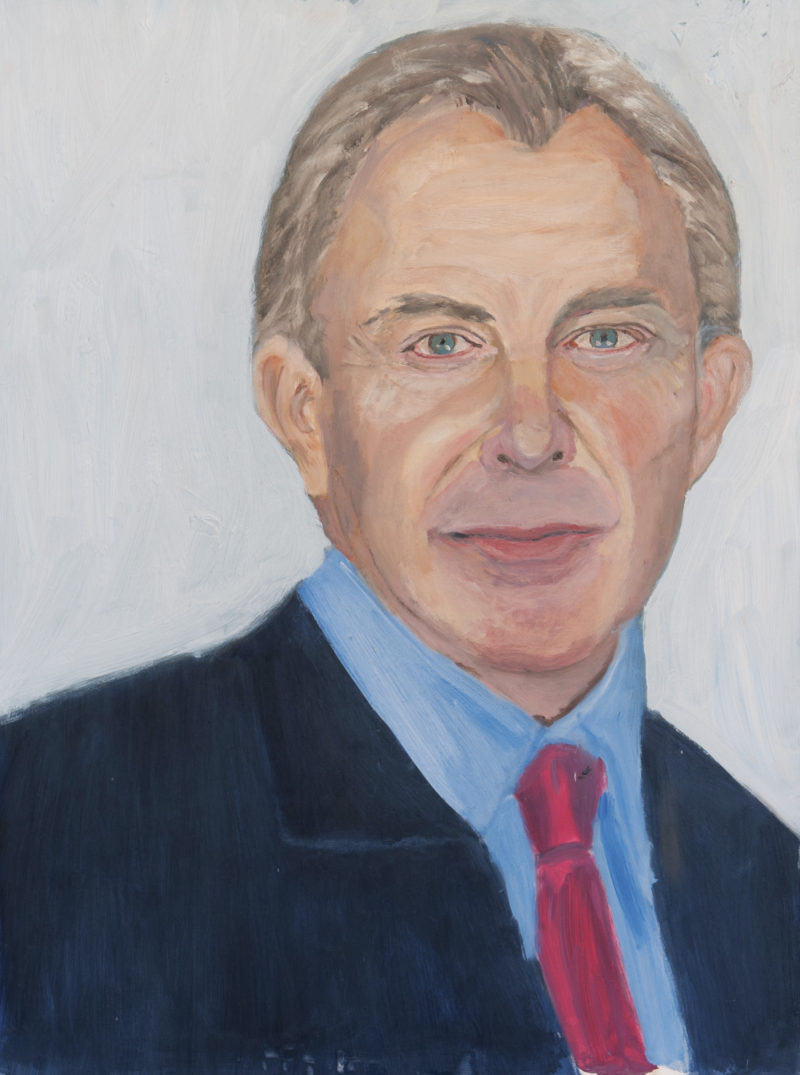
Prime Minister of Great Britain 1997-2007.
“He is not only a friend, but is also a visionary leader who has prepared his country to face challenges and opportunities over the horizon. Tony is a man who stands up for his beliefs and has the courage of his convictions.”
His depiction of German chancellor Angela Markel portrays a little bit of a cheery side of the prominent world leader, a departure from her trademark grumpy public image. Bush called the Dalai Lama “a very sweet man, and I painted him as sweetly as I could 26“27.
Perhaps the most unflattering paintings are that of former Iraq president Saddam Hussein and former Al-Qaeda leader Osama bin Laden. However, painting the Dalai Lama appears to tell more about the 43rd president as he enters a new phase of life that is more contemplative and sequestered.
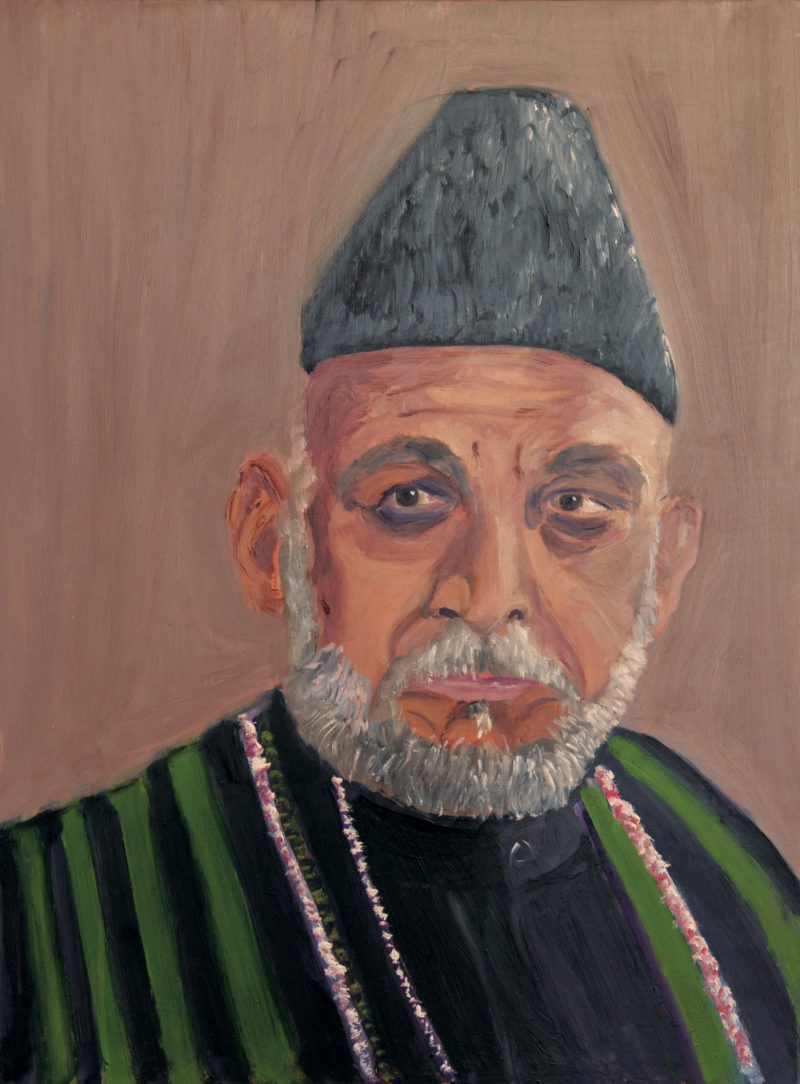
President of Afghanistan 2004-Present.
“I appreciate your strong stance for freedom and justice, and I’m proud to call you an ally in this war against those who would wreak havoc in order to deny people a chance to live in peace.”
But the most eagerly awaited portrait was that of President Vladimir Putin. Bush once said he could read the ex-KGB spymaster like a book, and after seeing this portrait, maybe he was right.
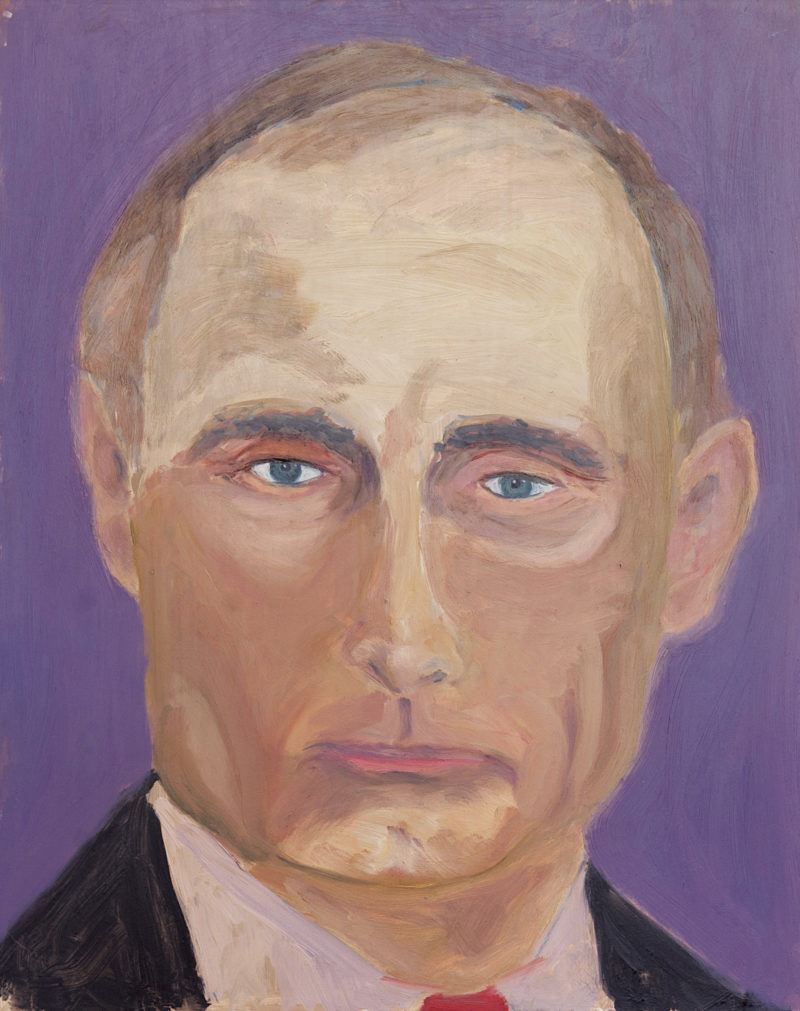
President of Russia 2000-2008 and 2012-Present, Prime Minister 1999-2000 and 2008-2012
“I’ve worked hard to have a personal relationship with Vladimir Putin so that when I discuss things with him, I can find areas of agreement – but I’ve also got a relationship such that I can bring up areas of concern without rupturing relations.”
George Bush prints & books
Currently, the former president has two art books. The first one is Portrait of Courage, while the other one is Out of Many, One: Portraits of America’s Immigrants.
Portraits of Courage is accompanied by portraits and stories of the American vets who served under his administration. The paintings depict the head and face in full-size, ostensibly bursting out of the frame with honest presence and significant expressive energy.
In Out of Many, One: Portraits of America’s Immigrants, the former president honors the sacrifice and determination of immigrants who come to the United States through hardships in search of the American Dream.
Can you buy George Bush Paintings?
You can buy George Bush paintings from bushcenter.org, with the proceeds going to the Bush Presidential Center. People can also purchase his art books from Amazon.
The Kennedy Center
Bush exhibition of veterans took place at the Reach, the new Kennedy Center wing that aims to make the space more interactive and inspiring art and culture destinations. The Kennedy Center is a historical center for the performing arts and is dedicated to former President J.F. Kennedy. It is America’s premier performing arts center in the capital Washington D.C.
